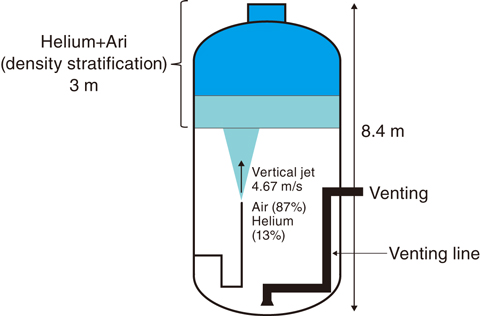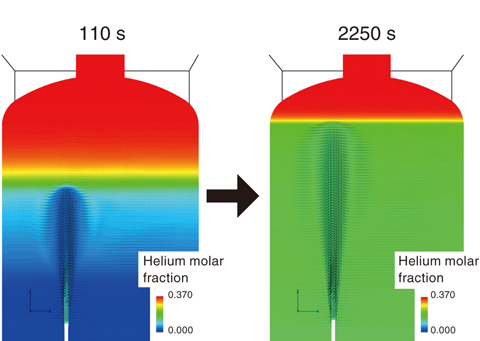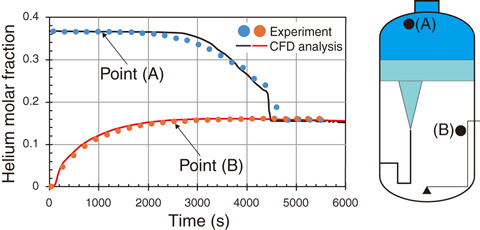
Fig.2-3 Schematic view of the IBE-3 experimental condition

Fig.2-4 Visualization of simulated instantaneous helium molar fraction and velocity vector

Fig.2-5 Comparison between the experimental and CFD results for the time history of the helium molar fraction
During severe accidents at light-water reactors, hydrogen explosions may occur owing to oxidation chemical reactions between the zirconium-alloy fuel-rod cladding and the coolant water because of severe core damage. Such a hydrogen explosion occurred during the accident at the TEPCO’s Fukushima Daiichi NPS in 2011, severely damaging the reactor building. We have advanced the Rig of Safety Assessment- Severe Accident (ROSA-SA) project to investigate thermal hydraulic phenomena in reactor-containment vessels during severe accidents. One of the project objectives is to understand the hydrogen behavior in the containment vessel through experiments and numerical simulations.
Multi-dimensional and complicated flow appears in the containment vessel. Density stratification may form at the upper space of the containment vessel because hydrogen is a light gas. Several research projects in Europe have focused on the stratification formation and its erosion by a jet in a large space through experiments using test facilities to simulate the containment vessel. We participated in the OECD/NEA third international benchmark exercise (IBE-3) for the experiment conducted at the Paul Scherrer Institute (PSI) in Switzerland on the stratification erosion by a low-momentum vertical buoyant jet from below to understand the phenomena, improve the numerical-simulation method, and validate the computer code.
The experiment conducted at PSI simulated the density stratification to a height of 3 m by employing a helium–air mixture instead of hydrogen at the upper region of a simulated vessel approximately 90 m3 in volume, as shown in Fig.2-3. The vertical buoyant jet was then injected from the lowest point of the test vessel to simulate the stratification erosion due to turbulent-flow mixing. We performed calculations for the PSI test using the open-source computational fluid dynamics (CFD) code OpenFOAM, which can be easily improved and made to implement new models. The calculation results shown in Fig.2-4 confirm that jet penetration and rebounding flow appeared; the stratification gradually eroded with time and thus helium was transported downwards. Fig.2-5 shows time histories of the helium molar fraction at two typical measuring points at the upper and middle regions of the simulated vessel. The helium molar fraction monotonically decreased owing to erosion of the stratification at the upper region, whereas it gradually increased at the middle region. We succeeded in calculating results that agreed well with the PSI-test results by modifying the turbulence model to consider turbulence dumping in the stratification. The calculated helium molar fraction thus reproduced the results calculated by other research organizations who participated in the IBE-3.
For future work, we will perform experiments with the Containment Integral Measurement Apparatus (CIGMA) as the main test facility of the ROSA-SA project, and use CFD analyses to clarify the mechanism of thermal-hydraulic phenomena under complicated accidental conditions.